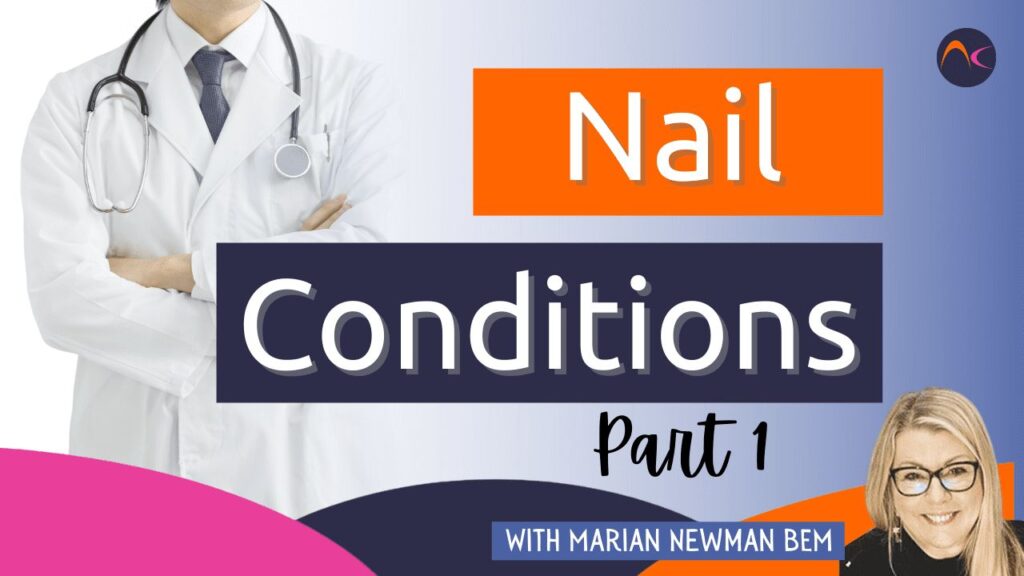EVERY training course, however long or short it is, MUST cover nail conditions! However, it is very clear that so many don’t!
There are several aspects about nail and skin conditions (or diseases and disorders) that every nail professional must know and understand:
- A menos que tenha uma qualificação avançada com um aspecto médico, você SÓ pode trabalhar com unhas e pele saudáveis (há algumas exceções, no entanto).
- You must never diagnose a condition or suggest a treatment. You can only ‘recognize’ and make recommendations (see 3).
- You must know and understand when to ‘adapt, refer, refuse’.
Adapt – recognize a condition that is relatively minor but needs some adaptation to the required service. This may be by avoiding an area of skin, using a gentler routine (e.g., for weak or damaged nails), no buffing, and replacing a UV gel polish for a traditional polish in the instance of a pseudomonas (greenie), and many more.
Refer – refer your client to a medical practitioner for a correct diagnosis. This does not have to be a General Practitioner. Not all General Practitioners are knowledgeable about nail conditions, but they are needed for a referral to a dermatologist if an allergy is suspected, for example. Many nail professionals ask for a letter from a GP to allow them to provide a nail service. Just keep in mind that such a letter is considered to be ‘private’ and not available on the NHS so there will be a cost involved. Your referral could be, in the first instance, to a pharmacist. Pharmacists are very highly qualified and may solve the problem. Also, a podiatrist/chiropodist can very often help for both feet and hands and doesn’t require a GP referral.
Refuse – do not be scared to refuse a nail service if the condition of your client’s nails or skin is such that you could make the condition worse, or you are unsure of what the condition is, e.g., a fungus, an allergy, etc. Yes, the client may go elsewhere and receive the service, but YOU are the professional and should uphold your professional ethics above money or an upset client.
The National Occupational Standards list a number of the more common nail and skin conditions that must be recognized. Those and more are included here on NailKnowledge, in the Knowledge Base section. Just remember these are for recognition and not a diagnosis. and will help you to decide when to ‘adapt, refer, refuse’.
If you’re looking for guidance on managing condições das unhas e manutenção de cutículas saudáveisEste artigo fornece insights valiosos e dicas práticas.


